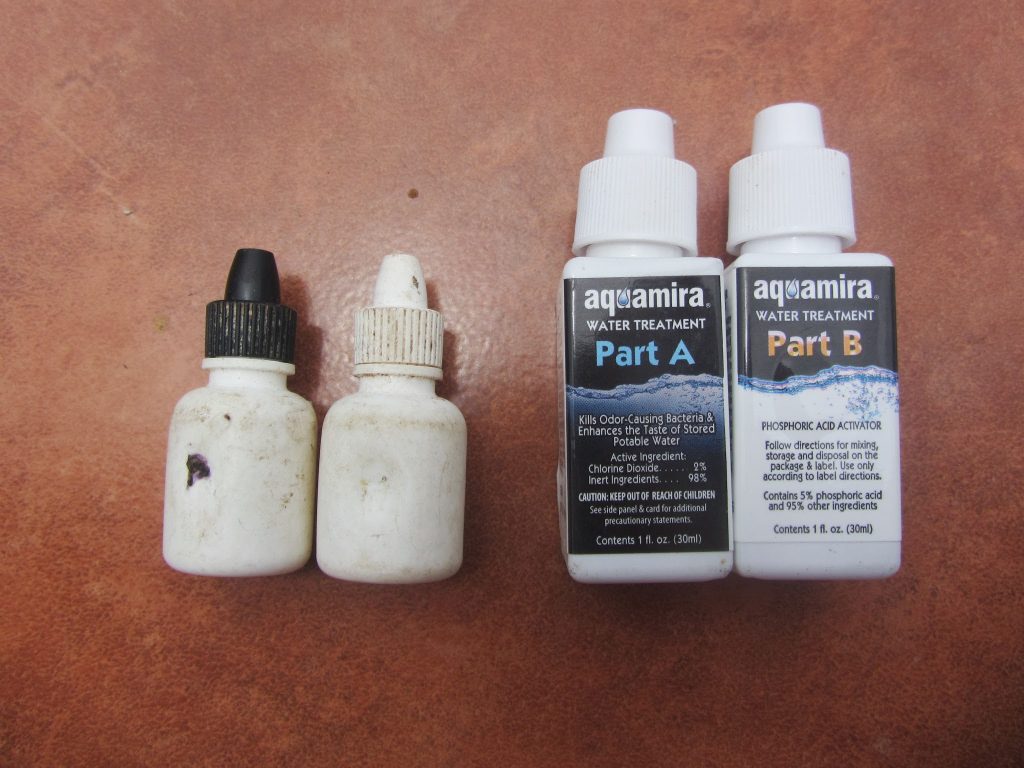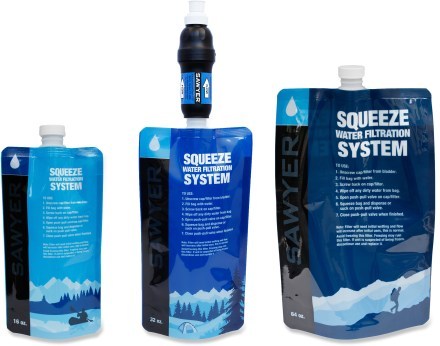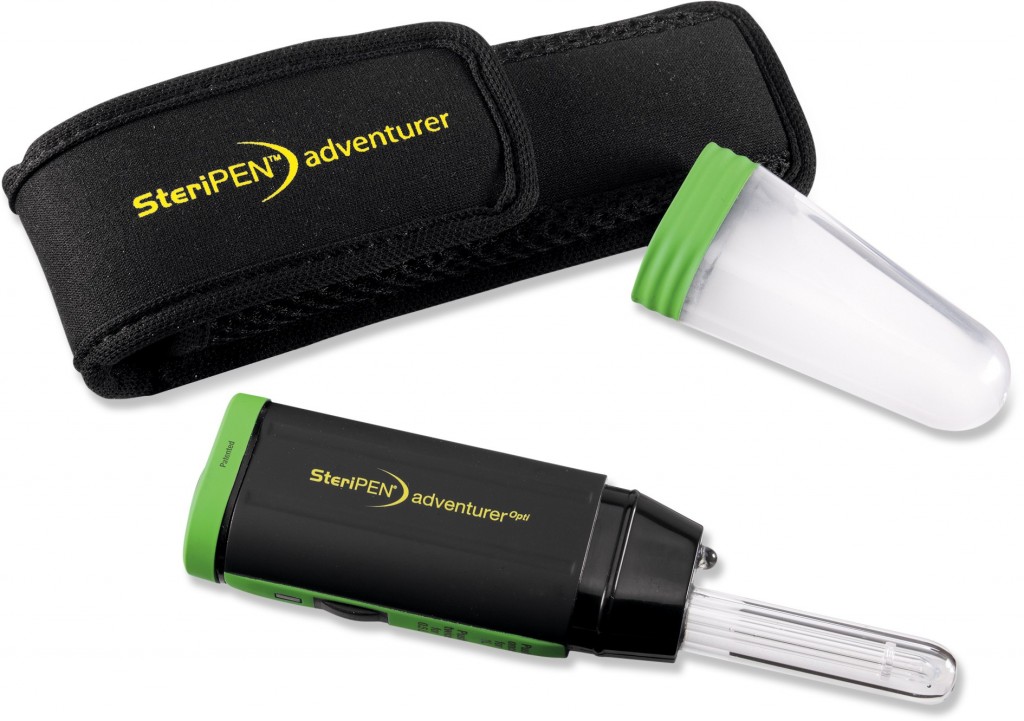“In wine there is wisdom, in beer there is strength and in water there is bacteria.”
– David Auerbach (2002)
Methods of water purification include boiling, filtering, ultraviolet light, and chemicals. All of them have pros and cons. Since 2005 my principal means of treatment have been chlorine dioxide (e.g. Aquamira). Your choice ultimately depends on two main factors: 1. The conditions into which you are venturing; 2. Personal preference.
Note: Good hygiene habits are of equal, or even more importance than water purification when it comes to avoiding intestinal disorders. More hikers get sick from sharing food or not cleaning their hands properly than they do from not purifying their water.
Chlorine Dioxide

Aquamira and Mini Dropper Bottles | To save weight and space, you can rebottle the drops into smaller containers.
Pros: Lightweight, compact, effective against Giardia and cryptosporidium (crypto).
Cons: Long wait time (20 minutes) – double that when water is cloudy or particularly cold; takes up to 4 hours to be completely effective against crypto.
FAQ: Aquamira Vs Bleach ………Which is better? A: The former is more expensive, harder to find and more labour intensive. That being said, I prefer it over standard bleach because it tastes better and is more effective against giardia and crypto.
Boiling
Pros: Effective at killing all nasties; emergency option when filter is clogged or chemicals are lost; best/only option in extreme cold when all water sources are frozen.
Cons: Very time consuming; uses up a lot of fuel, which equates to extra weight that you don’t really want to be carrying.
FAQ: How long do I need to boil water before it is safe to drink? A: Once water has come to a rolling boil it is fine to drink. Don’t bother boiling for 3 or more minutes; it is a waste of both time and more importantly, fuel.
Filters
Pros: Tastes good; chemical-free; maintainable on trail; generally durable if cleaned regularly and used in quality sources.
Cons: Heaviest of the different options; as not all water sources are created equal, pretty much all filters require regular maintenance in order to avoid clogging; doesn’t kill viruses.
FAQ: Isn’t there a big weight difference between filters and chemical treatments? A: In recent years, the emergence of lightweight models such as those on offer from Sawyer, mean that the weight/bulk penalty once associated with choosing a filter over chemicals is no longer the issue it once was.

Sawyer Squeeze Filters
Iodine
Pros: Lightweight, compact, effective against giardia, viruses and protozoa.
Cons: Doesn’t kill crypto; taste isn’t great (although you can get used to it); regular use for long periods is said to be harmful to your thyroid; long waiting time (20-30 minutes; double that for extremely cold water).
FAQ: I’ve used Iodine for years; is it really that bad for you? A: If you have an active thyroid problem or happen to be pregnant, then the answer is yes. For everyone else the answer is no………..as long as it’s taken in moderation over a finite period of time.
Ultraviolet Light
Pros: Easy to use; tastes good; fast working; unlike chemicals, UV treatment is equally effective no matter what the temperature of the water; good option for Third World travel as an alternative to always buying plastic water bottles whilst in towns.
Cons: Doesn’t work well if the water is murky; not “on-trail” maintainable; battery life variable.
Tips: 1. Extend battery life by removing them when not using your UV Wand; 2. Taking an extra battery is a good idea irrespective of the length of your trip. Click here for a review of one of the more popular UV Wand options, the SteriPEN Adventurer Opti.
Further Information
For an excellent overview of the various treatments and their effectiveness against bacteria, giardia, cryptosporidium (crypto) and viruses, check out the following link from the Centers for Disease Control & Prevention.
